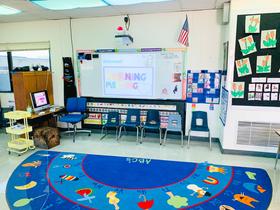2011 Classroom Size Update — 2025 Edition: Are Classes Still Growing Larger?
When PublicSchoolReview published its 2011 look at classroom size, the question loomed: were classes quietly swelling in size, eroding personalized instruction and straining teacher capacity? Over a decade later, the question remains urgent — but the answer is more nuanced. In 2025, classroom size, policy, and pedagogy all intersect in ways that differ from 2011. This article revisits that structure, updating each section with the latest data, stakeholder voices, and implications for families, educators, and school leaders.
1. National Averages: Mixed Signals, Methodological Challenges
In 2011, many observers pointed to steadily rising student-to-teacher ratios and concerns about “mega-classes.” Today, two factors complicate straightforward comparison: (a) federal reporting has become less complete, and (b) the pandemic disrupted trends.
On the data front, the U.S. Department of Education in 2025 has missed its usual June 1 release of the Condition of Education, delaying or reducing the number of published tables significantly. Brookings This gap makes it harder to track year-over-year changes in average class size.
The most recent reliable estimate comes from the 2020–21 National Teacher and Principal Survey (NTPS), which found that in public schools, self-contained classes averaged about 18.8 students across K–12. National Center for Education Statistics For departmentalized secondary instruction, averages hover in the low 20s, depending on subject and state. That aligns broadly with prior reports: EBSCO’s “Class Size: Research Starters” cites national averages of roughly 21.2 students in elementary classes and 26.8 in secondary classes in the U.S. Taken in isolation, these figures suggest relative stability compared to the early 2000s, when secondary classes often averaged 23–25 students. But averages conceal extremes. In states with rapid growth or teacher shortages, class sizes continue to spike beyond those means.
2. State Policies and Class-Size Caps: More Ambitious, More Contentious
In 2011, a handful of states had rigid class size caps—but enforcement was inconsistent. In 2025, class-size policy is more aggressive in some regions, particularly in urban and high-demand districts.
Take New York State’s 2022 mandate, which requires class caps of 20 in K–3, 23 in grades 4–8, and 25 in high school. New York Post+1 New York City reversed its earlier opposition in 2025 and committed to hiring 3,700 new teachers to meet those caps. New York Post That decision reflects both political pressure and practical reality: complying with class caps requires substantial staffing and funding.
In teacher contract disputes nationwide, class size is now a recurring frontline issue. The National Education Association reports that many strikes or near-strikes in 2022 and 2023 were driven in part by demands to reduce class sizes. National Education Association In Oregon, one teacher’s shift from 29 students down to 18 in her fourth grade boosted her ability to differentiate instruction dramatically. National Education Association
Still, many states lack enforceable limits. Some cap average class size across a school rather than per classroom; others allow districts to exceed limits with waivers. The patchwork means that whether classes are growing depends heavily on locale.
3. The Pandemic Offset and Enrollment Trends
When 2020 struck, many expected class sizes to balloon as schools pursued cost savings. But in many districts, falling enrollment blunted that pressure.
National public school enrollment dropped from 50.8 million in fall 2019 to about 49.4 million in fall 2020 and 2021. National Center for Education Statistics By 2022, enrollment edged back up to 49.6 million, but not enough to reclaim pre-pandemic levels. National Center for Education Statistics This dip created slack capacity in many districts, making it less urgent to combine classes or reduce staffing.
Demographically, 2025 marks a turning point. The Class of 2025 is projected to be the largest high school graduating class in U.S. history — about 3.8 to 3.9 million students. Cognia - The Source+2Higher Ed Dive+2 After 2025, enrollment in graduations is expected to decline steadily across many states. In short, in much of the country, school systems face a coming “enrollment cliff” rather than runaway growth.
That said, regional divergence is stark. Fast-growing states — especially in the South and West — still face upward pressure in student counts, while harder-hit states such as New York, Illinois, and California anticipate contraction. In places where enrollment is growing, class size pressures are real; elsewhere, the slack offers breathing room.
4. Why Class Size Still Matters — And What It Isn’t
The debate over class size endures largely because the stakes remain high. The landmark STAR (Student/Teacher Achievement Ratio) study from Tennessee is often cited: reducing class size by seven students (from 22 to 15) generated test score improvements equivalent to roughly three additional months of learning, effects that persisted years later. Brookings
But class size isn’t a magic bullet. Teacher quality, curriculum alignment, support services, technology access, and instructional model matter as much or more. Brookings notes that while smaller classes tend to help, the marginal benefit diminishes when teacher preparation is weak. Brookings
It’s also unjust to treat class size as a stand-alone solution in diverse classrooms. Students with special needs, English learners, or behavioral challenges demand differentiated instruction regardless of class size. Thus, many districts pair class-size limits with additional staffing, such as paraprofessionals, co-teachers, or intervention specialists.
One classroom in Austin, Texas—serving a mix of English learners and dyslexic students—kept enrollment at 18 but added a reading interventionist to support small-group pulls. The teacher reported that, while 18 is “tight,” the assistant’s presence made differentiation feasible without exhausting planning overload.
5. Real-World Examples: Districts That Shifted, and Why
Oregon’s Woodburn District
A fourth-grade teacher once had 29 students; after rebalancing, she dropped to 18. She described the difference: “It was amazing how much more I could do, how targeted my help could be.” National Education Association The district achieved this by hiring another teacher and redistributing students.
New York City
Facing legal pressure to obey the 2022 cap law, NYC pivoted to hiring 3,700 new teachers and repurposing space. New York Post+1 Still, administrators acknowledge that full compliance will stretch into 2028. Costs and facilities remain major constraints.
Districts in Bargaining Negotiations
In 2022, Columbus, Ohio, educators walked out over class sizes. Across the country, many school boards now negotiate minimum and maximum class limits for core subjects in contract language. National Education Association The pressure comes as teachers demand manageable workloads, not just wage increases.
6. Parent, Student, and Educator Implications
For Parents:
Ask about class-size limits, but also about support infrastructure — aides, intervention staff, and instructional models. A class of 25 with daily small-group pulls may be far more supportive than a class of 20 without them.
For Students:
Smaller classes can mean more teacher attention and fewer behavioral disruptions, but your success also depends on peer mix, instructional alignment, and access to support.
For Educators and Administrators:
Class-size goals must be paired with funding, space, and operational planning. Without those, class caps become symbolic commitments that districts may circumvent.
7. The Outlook to 2030: Will Classes Grow Again?
Looking ahead, class sizes are unlikely to grow uniformly. In many states, the projected decline in graduates after 2025 may relieve pressure in elementary and middle grades. But in fast-growing metro areas, district expansion and new housing may reignite demand.
Some states have already signaled renewed commitment. For example, several southern states have increased funding for K–3 class-size reduction programs and set aside grants for districts expanding capacity. In others, teacher shortages remain a limiting factor—hiring enough qualified instructors is challenging, especially in rural or disadvantaged areas.
If I were advising a district today, I’d recommend a hybrid approach: establish class-size targets (e.g., 18–22 in elementary), bind them in contracts, but allow flexibility in exceptional cases so long as supplementation (co-teaching, aides) is required. That balances rigor with realism.
Conclusion
Has classroom size continued growing since 2011? Neither uniformly nor dramatically—but pressure persists in many pockets. Federal data gaps complicate national snapshots, but state-level policy changes, local enrollments, and teacher shortages govern what’s happening on the ground.
Most of the U.S. sees a degree of stability in class size, with the pandemic dip offering respite in many districts. Yet hotspots of growth demand renewed vigilance, especially where demographic shifts intersect with funding shortfalls.
For parents, educators, and school leaders, the key is not “smaller is always better,” but “appropriately sized and resource-matched.” Thoughtful class-size policy, embedded in contracts, supported by staffing and infrastructure, and responsive to changing trends — that’s the path forward in 2025 and beyond.













